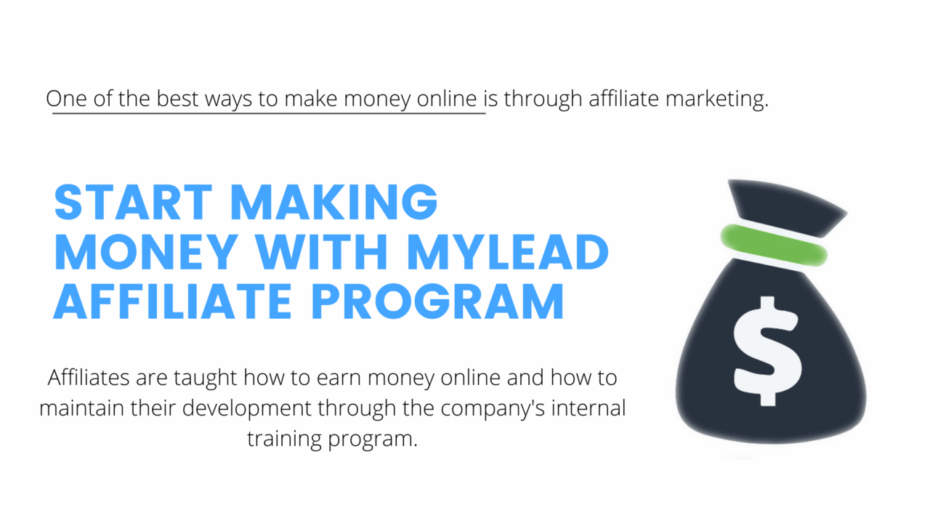Disclosure: This post contains affiliate links, which means that if you click on them and make a purchase, I will receive a commission. Read our Disclaimer for More.
In the current competitive business landscape, strategic partnerships have become an integral part of growth strategies. Among these, referral partner programs have gained prominence, helping businesses leverage their networks for mutual benefit.
This article will delve into the definition and function of referral partner programs, as well as the benefits they offer for your business.
Understanding Referral Partner Programs
A deep understanding of referral partner programs is vital for any business considering this approach. From defining what these programs are to understanding their core function, this knowledge forms the foundation for choosing the best program that aligns with your business goals.
Definition and Function of Referral Partner Programs
Referral partner programs, also known as affiliate or associate programs, are collaborative agreements between two businesses where one company (the referral partner) promotes the other’s products or services.
In return, the referral partner receives compensation, usually a percentage of the sales generated through these referrals. The overarching aim of these programs is to leverage existing customers or partner networks to attract new potential customers.
In essence, referral partner programs act as a bridge, connecting your business with a partner’s audience or customer base. This introduces new prospective customers to your offerings who might not have otherwise discovered you.
While the basic function of a referral partner program is customer acquisition, it also creates a symbiotic relationship between businesses, providing opportunities for increased visibility, market expansion, and revenue growth.
Benefits of Implementing Referral Partner Programs in Business
Implementing referral partner programs can offer a multitude of benefits for your business. These advantages stretch beyond mere customer acquisition and can fundamentally transform your business model.
Firstly, referral programs are cost-effective. Compared to traditional advertising or marketing campaigns, referral programs can generate higher return on investment (ROI) as costs are typically incurred only when a successful referral transaction occurs. This performance-based pricing model ensures you’re getting value for your expenditure.
Secondly, referral partner programs can lead to higher quality leads. People are more likely to trust recommendations from businesses or individuals they already trust. As a result, leads generated through these programs are usually of high quality and have a higher conversion rate.
Finally, referral programs can aid in expanding market reach. Through your partners’ networks, your business can tap into new markets and demographics that may have been challenging or costly to reach through traditional marketing channels. This also fosters stronger business relationships, creating an interconnected network of businesses supporting each other’s growth.
Importance of Choosing the Right Referral Partner Programs
Selecting the right referral partner programs can be a game-changer for your business. A well-chosen referral partner program can lead to significant business growth and customer retention.
It can also serve to enhance your brand image through strategic partnership. Let’s delve into the impacts and advantages that the correct referral partner programs can bring to your enterprise.
Impact on Business Growth and Customer Retention
When done right, referral partner programs can propel your business growth substantially. These programs can help you tap into new markets, expanding your customer base. By leveraging the audience of your referral partners, you can reach potential customers that you might not have been able to target otherwise. This expanded market reach can lead to increased sales, thus accelerating your business growth.
Moreover, referral partner programs can also significantly boost customer retention. Given that people trust recommendations from businesses or individuals they already trust, customers acquired through referral programs are often more loyal.
They are likely to stick around longer, repeat purchases, and even become advocates for your brand themselves. This higher customer retention rate translates into increased customer lifetime value, enhancing your business’s overall profitability.
In addition to growth and customer retention, referral partner programs can also help your business save on marketing expenses. Since costs are typically incurred only when a successful referral transaction occurs, referral programs can be a more cost-effective way to acquire and retain customers compared to traditional marketing strategies.
Enhancing Brand Image Through Strategic Partnership
Referral partner programs can significantly improve your brand image, especially when your partners are well-respected businesses or individuals within your industry. When these partners endorse your products or services to their audience, it lends credibility to your brand. This, in turn, boosts your brand image and reputation.
Furthermore, strategic partnerships can also help your brand get associated with positive values and attributes. For example, if your referral partner is known for their exceptional customer service, eco-friendly practices, or innovative products, these positive associations can rub off on your brand as well. This can strengthen your brand image and make your offerings more appealing to potential customers.
Lastly, these strategic partnerships can demonstrate your business’s commitment to collaboration and mutual growth. By joining forces with other businesses, you’re showing that your brand values partnership and believes in creating win-win situations. This can enhance your brand’s reputation and make it more attractive to customers, partners, and even investors.
Key Factors to Consider When Selecting Referral Partner Programs
Choosing the right referral partner programs is a critical decision that can significantly influence your business’s growth trajectory. While there is no one-size-fits-all solution, there are certain factors that you need to consider to ensure you make an informed decision.
These factors include aligning the program with your business goals, evaluating the quality and relevance of prospective partners, and considering the reward structure of the referral partner programs.
Aligning Program with Business Goals
One of the fundamental steps in selecting a referral partner program is ensuring it aligns with your business goals. It’s essential to have a clear understanding of what you want to achieve from the program, be it expanding into new markets, attracting a specific customer demographic, increasing sales, or improving brand visibility.
This clarity will help you identify the type of partners you need and the kind of referral program that will best serve your goals. For instance, if your goal is to penetrate a new geographic market, partnering with a company that has a strong presence in that area would be beneficial.
Moreover, the program should fit with your overall marketing and sales strategies. For instance, if your business is heavily focused on online sales, a partner with a strong online presence and digital marketing strategies would be a good fit.
The Quality and Relevance of the Prospective Partners
The success of your referral partner program hinges on the quality and relevance of your partners. It’s crucial to partner with businesses or individuals who have a good reputation, a sizable and engaged audience, and values that align with yours.
Consider the potential partner’s audience demographic. Does it align with your target customer profile? A high-quality partner’s audience will closely match your target customers, leading to higher conversion rates. Additionally, the partner’s market reputation and values should align with your brand to maintain consistency and authenticity.
Lastly, look at their engagement levels. A partner with an active and engaged audience can generate more referrals compared to a partner with a large but disengaged audience. Therefore, it’s essential to look beyond mere numbers and assess the quality of the audience.
The Reward Structure of the Referral Partner Programs
The reward structure of referral partner programs is a critical factor to consider. It should be attractive enough to motivate partners to promote your products or services actively. At the same time, it should make financial sense for your business.
There are various types of reward structures, from commission-based to flat-fee models. The right structure depends on your business model, profit margins, and the nature of your products or services. For instance, a high-ticket item might be better suited to a commission-based structure, while a subscription service might work well with a flat-fee model.
Remember, the aim is to create a win-win situation. The reward structure should not only incentivize partners but also provide good value to your business. Therefore, it’s crucial to carefully consider and test different reward structures to find the one that works best for your specific situation.
Top Examples of Successful Referral Partner Programs
Referral partner programs have been successfully implemented across a broad spectrum of industries, each with unique approaches and strategies that suit their specific needs.
By studying these successful examples, businesses can glean valuable insights and lessons that can guide their own referral partner program strategies. Let’s explore some of these programs and the key lessons we can learn from their success.
Overview of Successful Referral Programs in Various Industries
There are numerous examples of successful referral partner programs in different sectors. Let’s look at a few:
Software Industry – Dropbox: Dropbox, a popular file hosting service, utilized a referral program to significantly increase its user base. For every friend a user referred to Dropbox who installed and signed up for the service, both the user and the friend received additional storage space. This reward was relevant to their users and provided a clear, immediate benefit.
Retail – Amazon: Amazon’s affiliate program is another powerful example. Affiliates can earn up to 10% in referral fees by promoting Amazon products. Because of Amazon’s vast product range, affiliates can choose to promote products that are relevant to their own audience, making the program highly flexible and attractive.
Travel – Airbnb: Airbnb’s referral program has been crucial to its growth. When current users refer Airbnb to friends, the friends receive a discount on their first stay, and the referrer gets travel credit after the friend completes a trip.
Banking – American Express: American Express offers a referral program where cardholders can earn bonus points for each approved referral. This incentivizes cardholders to promote American Express to their networks, driving customer acquisition.
Each of these referral programs is tailored to the company’s industry, audience, and business goals, proving that a well-thought-out and executed referral partner program can yield significant results across different sectors.
Key Lessons From Their Success
Several key lessons can be drawn from these successful referral partner programs:
Relevance: All these companies offer rewards that are relevant and valuable to their audience. This ensures that the referral program is attractive to both the referrer and the referred.
Simplicity: Each of these programs is easy to understand and participate in. Keeping the program simple and straightforward encourages more participation.
Mutual Benefit: Each program is structured in a way that both the referrer and the referred receive a reward. This creates a win-win situation and incentivizes both parties to participate.
Integration: These companies have seamlessly integrated their referral programs into the user experience. Whether it’s through app notifications, emails, or website banners, they constantly remind users about the referral program.
These lessons highlight the importance of designing a referral program that is relevant, simple, beneficial to all parties, and well-integrated into the customer journey. By adopting these practices, businesses can increase the chances of their referral partner programs achieving similar success.
Implementing Your Chosen Referral Partner Program
After careful selection of your referral partner program based on your business goals and the prospective partners’ quality and relevance, the next step is implementation.
The process of integrating the program into your business and engaging partners in your referral program are two pivotal phases of implementation. Let’s delve into these steps in more detail.
Steps in Integrating a Referral Partner Program into Your Business
The process of integrating a referral partner program into your business involves several key steps:
Define Program Details: The first step is to define the terms and conditions of your referral program. This includes details about the reward structure, eligibility criteria for partners, and tracking and payment procedures.
Choose a Referral Software: Choosing the right referral software is crucial for tracking referrals, managing payments, and ensuring the overall smooth operation of your program. The software should be easy to use for both you and your partners and should integrate seamlessly with your existing systems.
Set Up the Program: Once the software is chosen, set up your program, including the terms and conditions, reward structure, and any promotional materials you’ll use to inform potential partners about the program.
Integrate into Your Marketing Strategy: The referral program should be integrated into your broader marketing strategy. This includes promoting the program through your website, email marketing, social media, and other marketing channels to reach potential partners.
Test and Launch: Before launching, test the program to ensure everything works correctly. Once testing is complete, you can officially launch your referral partner program.
How to Engage Partners in Your Referral Program
Engaging partners in your referral program is crucial for its success. Here are some strategies to motivate and involve your partners:
Communicate Clearly: Ensure your partners understand how the program works, the benefits they’ll receive, and how they can refer people to your business. Clear, transparent communication helps build trust and encourage participation.
Provide Necessary Tools: Equip your partners with the necessary tools to promote your business. This could include promotional materials, product information, and tracking tools to monitor their referrals and rewards.
Incentivize Participation: Regularly incentivize your partners to motivate them to continue referring new customers. This can be through additional rewards for reaching certain milestones, bonuses for high-quality referrals, or other incentives that align with your partners’ interests.
Maintain Regular Contact: Keep your partners engaged by maintaining regular contact. This can be through regular updates about the program, feedback on their performance, or simply checking in to see if they need any support.
By following these steps and strategies, you can successfully implement and manage your referral partner program, setting your business up for long-term growth and success.
Evaluating the Success of Your Referral Partner Programs
After implementing your referral partner programs, it’s crucial to regularly evaluate their success to ensure they are delivering the desired results. You can do this by monitoring key performance indicators (KPIs) and periodically reviewing and adjusting your program based on these findings.
Key Performance Indicators (KPIs) to Monitor
Several KPIs can help you assess the effectiveness of your referral partner programs:
Number of Referrals: The most direct indicator of success is the number of referrals your partners are generating. This can provide insights into the reach of your program and the engagement of your partners.
Conversion Rate: It’s not enough to just generate referrals; those referrals need to convert into customers. The conversion rate can indicate the quality of the referrals and the effectiveness of your sales process.
Lifetime Value of Referred Customers (LTV): Referred customers may have a higher lifetime value than other customers due to increased loyalty or purchase frequency. Monitoring LTV can help you understand the long-term impact of your referral program.
Return on Investment (ROI): Comparing the costs of running your referral program (rewards, software costs, management, etc.) to the revenue generated by referred customers can provide insight into the financial viability of your program.
Partner Satisfaction: Feedback from your partners can help you understand their experience with your program, which can influence their willingness to continue referring customers.
Regular Review and Adjustment of Your Program
Just like any other marketing strategy, referral partner programs require regular review and adjustment:
Regular Review: Schedule periodic reviews of your referral program’s performance based on the KPIs. This can be monthly, quarterly, or annually, depending on your business’s needs.
Analysis of KPIs: During these reviews, analyze your KPIs to assess whether the program is meeting your goals. Look at trends over time and compare performance across different partners, if applicable.
Adjustments: Based on your analysis, make necessary adjustments to your program. This could include changing the reward structure, updating promotional materials, providing additional support to partners, or revising your partner recruitment strategy.
Communication: If you make changes to your program, communicate these clearly to your partners to ensure they understand any new features or changes to the reward structure.
Evaluating your referral partner programs and making adjustments based on these evaluations can help you optimize the program’s success and contribute to your business’s overall growth. Remember, the goal is to create a win-win scenario for both your business and your partners, so ongoing evaluation and improvement are crucial.
Conclusion: Maximizing the Power of Referral Partner Programs
As we conclude our exploration of referral partner programs, it’s evident that they offer a strategic, cost-effective means for businesses to leverage their networks, drive customer acquisition, and grow.
However, the success of these programs depends heavily on the thoughtful selection, implementation, management, and regular evaluation of the chosen program.
The Long-term Value of Referral Partner Programs
Referral partner programs bring lasting value to businesses in several ways. Beyond the immediate benefit of customer acquisition, these programs strengthen relationships with partners, foster brand loyalty, and have the potential to increase the lifetime value of customers.
Referred customers often have a higher degree of trust and loyalty towards the brand, thanks to the personal connection that led them to the product or service. This typically results in higher retention rates and greater customer lifetime value, making referral partner programs not just a short-term customer acquisition strategy, but a long-term asset for business growth.
Preparing Your Business for Success with Referral Partner Programs
To maximize the benefits of referral partner programs, it’s essential for businesses to carefully select a program that aligns with their goals and the interests of their prospective partners. Implementation should be thoughtful and integrated into the wider marketing strategy to ensure visibility and engagement.
Once the program is in place, active management and partner engagement are crucial. Clear communication, providing necessary tools and resources, and motivating partners through incentives and feedback can all contribute to a more successful program.
Finally, regular evaluation of the program’s performance is key. Tracking and analyzing key performance indicators, conducting regular program reviews, and making adjustments based on these insights will ensure the program continues to deliver results and contribute to the business’s success.






